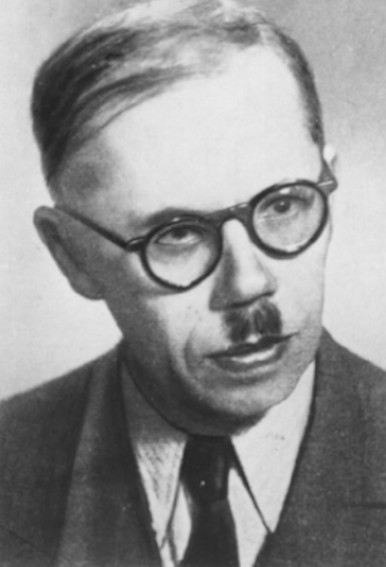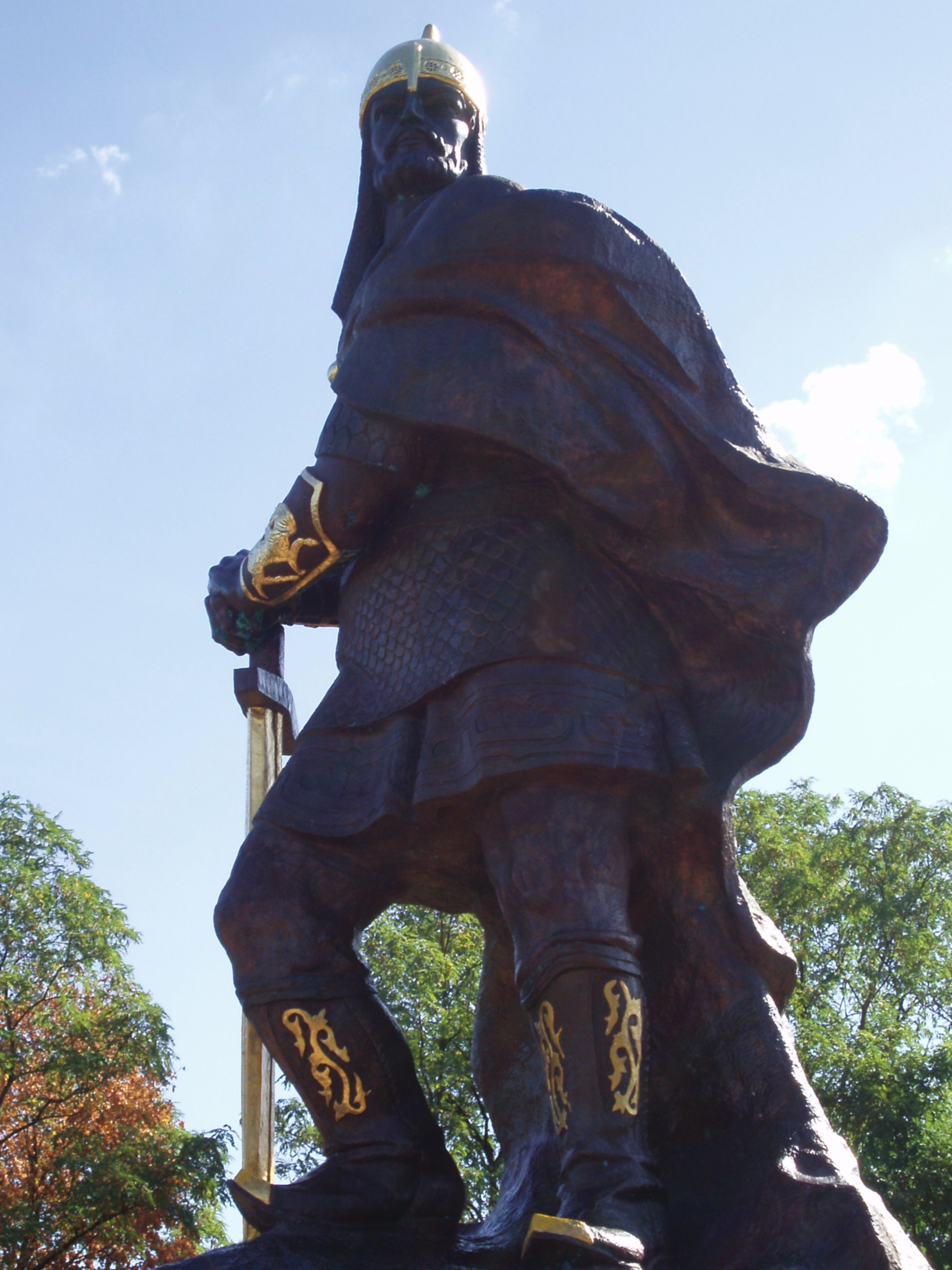|
Drevlyans
The Drevlians ( uk, Древляни, Drevliany, russian: Древля́не, Drevlyane) were a tribe of Early East Slavs between the 6th and the 10th centuries, which inhabited the territories of Polesia and right-bank Ukraine, west of the eastern Polans and along the lower reaches of the rivers Teteriv, Uzh, Ubort, and Stsviha. To the west, the Drevlians' territories reached the Sluch River, where the Volynians (related to the territory of Volynia) and Buzhans (related to the name of Southern Bug river) lived. To the north, the Drevlians' neighbors were the Dregovichs. Ethnonym Their name is derived from Slavic ''drevo/древо'' or ''derevo/дерево'', meaning "wood" and "tree", because they lived in the forests. Their name may be rendered "the dwellers in the forest". They possibly were mentioned as ''Forsderen-Liudi'' by Bavarian Geographer in the 9th century. Nestor the Chronicler (1056–1114) mentioned that those Slavs who settled in open fields had been call ... [...More Info...] [...Related Items...] OR: [Wikipedia] [Google] [Baidu] |
Early East Slavs
The early Slavs were a diverse group of tribal societies who lived during the Migration Period and the Early Middle Ages (approximately the 5th to the 10th centuries AD) in Central and Eastern Europe and established the foundations for the Slavic nations through the Slavic states of the High Middle Ages. The Slavs' original homeland is still a matter of debate due to a lack of historical records; however, scholars believe that it was in Eastern Europe, with Polesia being the most commonly accepted location. The first written use of the name "Slavs" dates to the 6th century, when the Slavic tribes inhabited a large portion of Central and Eastern Europe. By then, the nomadic Iranian-speaking ethnic groups living on the Eurasian Steppe (the Scythians, Sarmatians, Alans etc.) had been absorbed by the region's Slavic-speaking population. Over the next two centuries, the Slavs expanded west to the Elbe river and south towards the Alps and the Balkans, absorbing the Celtic, Germanic, ... [...More Info...] [...Related Items...] OR: [Wikipedia] [Google] [Baidu] |
Kievan Rus'
Kievan Rusʹ, also known as Kyivan Rusʹ ( orv, , Rusĭ, or , , ; Old Norse: ''Garðaríki''), was a state in Eastern and Northern Europe from the late 9th to the mid-13th century.John Channon & Robert Hudson, ''Penguin Historical Atlas of Russia'' (Penguin, 1995), p.14–16.Kievan Rus Encyclopædia Britannica Online. Encompassing a variety of polities and peoples, including East Slavic, Norse, and Finnic, it was ruled by the Rurik dynasty, founded by the |
East Slavic Tribes Peoples 8th 9th Century
East or Orient is one of the four cardinal directions or points of the compass. It is the opposite direction from west and is the direction from which the Sun rises on the Earth. Etymology As in other languages, the word is formed from the fact that east is the direction where the Sun rises: ''east'' comes from Middle English ''est'', from Old English ''ēast'', which itself comes from the Proto-Germanic *''aus-to-'' or *''austra-'' "east, toward the sunrise", from Proto-Indo-European *aus- "to shine," or "dawn", cognate with Old High German ''*ōstar'' "to the east", Latin ''aurora'' 'dawn', and Greek ''ēōs'' 'dawn, east'. Examples of the same formation in other languages include Latin oriens 'east, sunrise' from orior 'to rise, to originate', Greek ανατολή anatolé 'east' from ἀνατέλλω 'to rise' and Hebrew מִזְרָח mizraḥ 'east' from זָרַח zaraḥ 'to rise, to shine'. '' Ēostre'', a Germanic goddess of dawn, might have been a personification ... [...More Info...] [...Related Items...] OR: [Wikipedia] [Google] [Baidu] |
Henryk Łowmiański
Henryk Łowmiański (August 22, 1898 near Ukmergė - September 4, 1984 in Poznań) was a Polish historian and academic who was an authority on the early history of the Slavic and Baltic people. A researcher of the ancient history of Poland, Lithuania and the Slavs in general, Łowmiański was the author of many works, including most prominently the six-volume monumental monograph '' Początki Polski'' (''The Beginnings of Poland''). Scholar years Łowmiański was born to father Konstanty and mother Kazimiera ''née'' Rudzińska. After receiving his doctorate on the ''"Wschody" miast litewskich w XVI wieku'' (''Beginnings of Lithuanian Cities'') in 1924, Łowmiański became the first history Ph.D in the University of Stefan Batory (USB). Prior the World War II, working as an academic archivist wrote a two-volume ''Studia nad początkami społeczeństwa i państwa litewskiego'' (1931-32), and a treatise ''Uwagi w sprawie podłoża społec-znego i gospodarczego Unii Jagiellońskiej' ... [...More Info...] [...Related Items...] OR: [Wikipedia] [Google] [Baidu] |
Knyaz Igor In 945 By Lebedev
, or (Old Church Slavonic: Кнѧзь) is a historical Slavic title, used both as a royal and noble title in different times of history and different ancient Slavic lands. It is usually translated into English as prince or duke, depending on specific historical context and the potentially known Latin equivalents of the title for each bearer of the name. In Latin sources the title is usually translated as , but the word was originally derived from the common Germanic (king). The female form transliterated from Bulgarian and Russian is (), in Slovene and Serbo-Croatian (Serbian Cyrillic: ), ''kniahinia'' (княгіня) in Belarusian and ''kniazioŭna'' (князёўна) is the daughter of the prince, (княгиня) in Ukrainian. In Russian, the daughter of a knyaz is (). In Russian, the son of a knyaz is ( in its old form). The title is pronounced and written similarly in different European languages. In Serbo-Croatian and some West Slavic languages, the wor ... [...More Info...] [...Related Items...] OR: [Wikipedia] [Google] [Baidu] |
Handicraft
A handicraft, sometimes more precisely expressed as artisanal handicraft or handmade, is any of a wide variety of types of work where useful and decorative objects are made completely by one’s hand or by using only simple, non-automated related tools like scissors, carving implements, or hooks. It is a traditional main sector of craft making and applies to a wide range of creative and design activities that are related to making things with one's hands and skill, including work with textiles, moldable and rigid materials, paper, plant fibers,clay etc. One of the oldest handicraft is Dhokra; this is a sort of metal casting that has been used in India for over 4,000 years and is still used. In Iranian Baluchistan, women still make red ware hand-made pottery with dotted ornaments, much similar to the 5000-year-old pottery tradition of Kalpurgan, an archaeological site near the village. Usually, the term is applied to traditional techniques of creating items (whether for perso ... [...More Info...] [...Related Items...] OR: [Wikipedia] [Google] [Baidu] |
Farming
Agriculture or farming is the practice of cultivating plants and livestock. Agriculture was the key development in the rise of sedentary human civilization, whereby farming of domesticated species created food surpluses that enabled people to live in cities. The history of agriculture began thousands of years ago. After gathering wild grains beginning at least 105,000 years ago, nascent farmers began to plant them around 11,500 years ago. Sheep, goats, pigs and cattle were domesticated over 10,000 years ago. Plants were independently cultivated in at least 11 regions of the world. Industrial agriculture based on large-scale monoculture in the twentieth century came to dominate agricultural output, though about 2 billion people still depended on subsistence agriculture. The major agricultural products can be broadly grouped into foods, fibers, fuels, and raw materials (such as rubber). Food classes include cereals ( grains), vegetables, fruits, cooking oils, m ... [...More Info...] [...Related Items...] OR: [Wikipedia] [Google] [Baidu] |
First Millennium
File:1st millennium montage.png, From top left, clockwise: Depiction of Jesus, the central figure in Christianity; The Colosseum, a landmark of the once-mighty Roman Empire; Kaaba, the Great Mosque of Mecca, the holiest site of Islam; Chess, a new board game, becomes popular around the globe; The Western Roman Empire falls, ushering in the Early Middle Ages; The skeletal remains of a young woman, known as the "ring lady", killed by the eruption of Mount Vesuvius in AD 79; Attila the Hun, leader of the Hunnic Empire, which takes most of Eastern Europe (Background: Reproduction of ancient mural from Teotihuacan, National Museum of Anthropology, Mexico City), 400px, thumb rect 9 6 182 173 Jesus Christ rect 192 5 411 169 Roman Empire rect 420 16 560 101 Great Mosque of Mecca rect 416 112 561 212 Chess rect 13 189 171 356 Attila the Hun rect 184 177 308 346 Eruption of Mount Vesuvius in 79 AD rect 313 222 559 352 Early Middle Ages rect 1 1 566 394 Teotihuacan rect 1 1 ... [...More Info...] [...Related Items...] OR: [Wikipedia] [Google] [Baidu] |
Korosten
Korosten ( uk, Ко́ростень, ; historically also ''Iskorosten'' ) is a historic city and a large transport hub in the Zhytomyr Oblast (province) of northern Ukraine. It is located on the Uzh River. Korosten serves as the administrative center of the Korosten Raion (district) . As of January 2022 Korosten's population was approximately Name There are different theories about the origin of the name of the city. The name may be derived from the word ''korost'', 'brushwood, bushes, shrubbery'; the form ''Iskorosten'' sometimes found in early sources is probably based on the common repetition of prepositions in Old East Slavic: ''iz grada iz''... 'from the city from...'. Another theory holds that the city was built entirely of wood, and its walls were surrounded by an oak fence, unhewn, with bark, leading to the name Is-koro-sten, i.e. the city "from bark on the wall" in Ukrainian. Alternatively, the city might have been named after the sun god Khors/Xors (Horus) - the ... [...More Info...] [...Related Items...] OR: [Wikipedia] [Google] [Baidu] |
Prince
A prince is a male ruler (ranked below a king, grand prince, and grand duke) or a male member of a monarch's or former monarch's family. ''Prince'' is also a title of nobility (often highest), often hereditary, in some European states. The female equivalent is a princess. The English word derives, via the French word ''prince'', from the Latin noun , from (first) and (head), meaning "the first, foremost, the chief, most distinguished, noble ruler, prince". Historical background The Latin word (older Latin *prīsmo-kaps, literally "the one who takes the first lace/position), became the usual title of the informal leader of the Roman senate some centuries before the transition to empire, the '' princeps senatus''. Emperor Augustus established the formal position of monarch on the basis of principate, not dominion. He also tasked his grandsons as summer rulers of the city when most of the government were on holiday in the country or attending religious rituals, ... [...More Info...] [...Related Items...] OR: [Wikipedia] [Google] [Baidu] |
Malyn
Malyn ( uk, Ма́лин, Mályn) (sometimes spelled Malin) is a city in Zhytomyr Oblast (province) of Ukraine located about northwest of Kyiv. It served as the administrative center of Malyn Raion, now located in Korosten Raion. Population: Located in a wooded area of Polesia (literally woodland), the city is known for its paper factory and a sheet of paper is depicted on the city's coat of arms. The city is located on Irsha river which is a left tributary of Teteriv. Through the city runs an important railroad Kyiv – Korosten and a motor vehicle highway Kyiv-Kovel-Warsaw. The town hosts a seismic monitoring station (designated PS-45) belonging to an international network of nuclear test monitoring stations intended to verify the Comprehensive Test Ban Treaty (CTBT) treaty. FC Papirnyk Malyn is a Ukrainian football team based in Malyn. History The name of the city is traditionally connected with the Prince of Drevlian Mal who is mentioned in the Russian chronicles, p ... [...More Info...] [...Related Items...] OR: [Wikipedia] [Google] [Baidu] |







